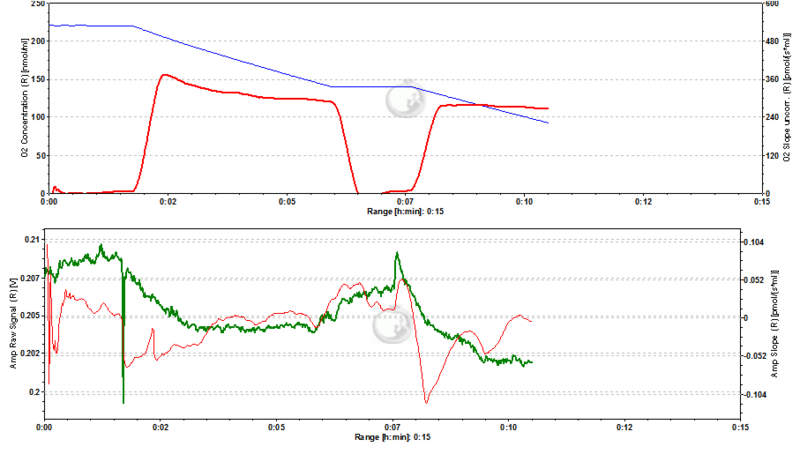File:TMRM Fig 2.png

Original file (907 × 515 pixels, file size: 26 KB, MIME type: image/png)
Figure2. 20 nM TMRM. MLM incubated with 20 nM TMRM and energized by CI-linked substrates display a basal level of fluorescence due to accumulation of the dye according to their mtMP in the LEAK state. Upon addition of ADP proton motive force is partially dissipated to drive the generation of ATP (OXPHOS state) and this leads to a decrease of mtMP. A decrease of mtMP causes the release of accumulated TMRM and this is reflected by a decrease of the fluorescence signal. Addition of the inhibitor of the adenine nucleotide translocator (ANT) carboxy atractyloside (CATR) inhibits ATP synthesis (LEAK in the presence of ATP) and thus the influx of H+ through the ATP synthase. The consecutive slow restoration of mtMP causes a re-accumulation of TMRM and hence an increase of the fluorescence signal. Finally, upon addition of the uncoupler SF6847 a collapse of mtMP is observed and thus a release of TMRM with an associated decrease of fluorescence. The short-lived peak of fluorescence after addition of uncoupler is due to transient unquenching of matrix TMRM caused by the rapid release of the dye. ∆=0.008 FU.
File history
Click on a date/time to view the file as it appeared at that time.
| Date/Time | Thumbnail | Dimensions | User | Comment | |
|---|---|---|---|---|---|
| current | 14:44, 11 March 2014 |  | 907 × 515 (26 KB) | Krumschnabel Gerhard (talk | contribs) | Figure2. 20 nM TMRM. MLM incubated with 20 nM TMRM and energized by CI-linked substrates display a basal level of fluorescence due to accumulation of the dye according to their mtMP in the LEAK state. Upon addition of ADP proton motive force is partially |
You cannot overwrite this file.
File usage
The following page uses this file: